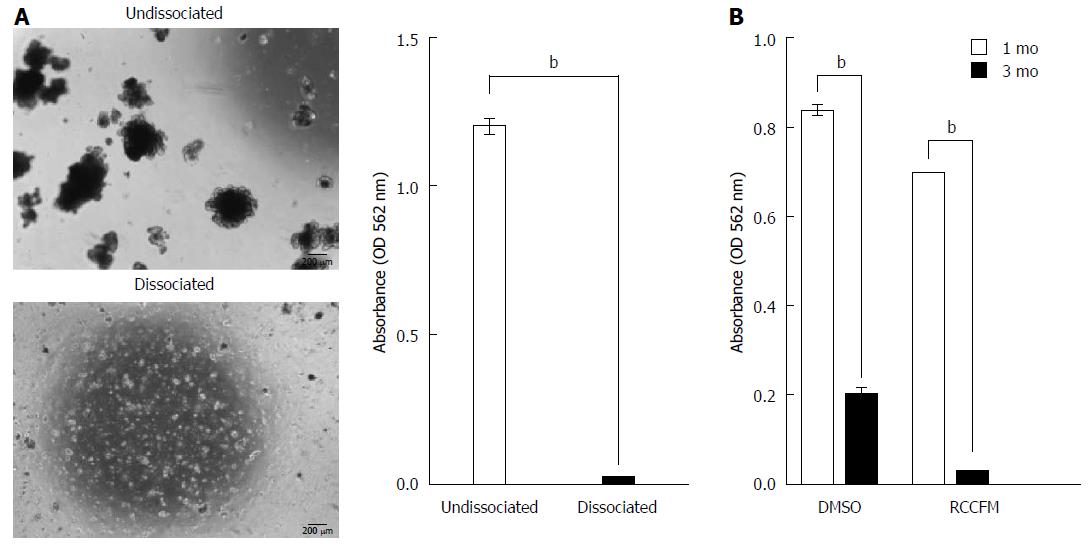Copyright
©The Author(s) 2017.
World J Gastroenterol. Feb 14, 2017; 23(6): 964-975
Published online Feb 14, 2017. doi: 10.3748/wjg.v23.i6.964
Published online Feb 14, 2017. doi: 10.3748/wjg.v23.i6.964
Figure 4 Low recovery of cryopreserved intestinal organoids upon long-term cryopreservation.
Cultured organoids (P3) under ENR medium were subjected to dissociation or were left undissociated, followed by cryopreservation. A: Representative morphology (left panel) and quantification of recovery (right panel) for organoids on day 7 cultured under ENR conditions after thawing organoid cryopreserved for 1 mo in the presence of 10% DMSO as a cryoprotectant. Scale bars: 200 μm. The data are shown as the means ± SDs of triplicate MTT assays (bP < 0.01, Student’s t-tests). B: Quantification of recovery from cryopreserved organoid was performed using MTT assay. After 1 or 3 mo of cryopreservation with 10% DMSO or RCCFM (commercial freezing media), organoids were cultured for 7 d under ENR conditions. The data are shown as the mean ± SDs of triplicate experiments (bP < 0.01, two-way analysis of variance with Dunnett’s T3 tests). MTT: Methyl thiazolyl tetrazolium; ENR: Epidermal growth factor/Noggin/R-spondin1.
- Citation: Han SH, Shim S, Kim MJ, Shin HY, Jang WS, Lee SJ, Jin YW, Lee SS, Lee SB, Park S. Long-term culture-induced phenotypic difference and efficient cryopreservation of small intestinal organoids by treatment timing of Rho kinase inhibitor. World J Gastroenterol 2017; 23(6): 964-975
- URL: https://www.wjgnet.com/1007-9327/full/v23/i6/964.htm
- DOI: https://dx.doi.org/10.3748/wjg.v23.i6.964









